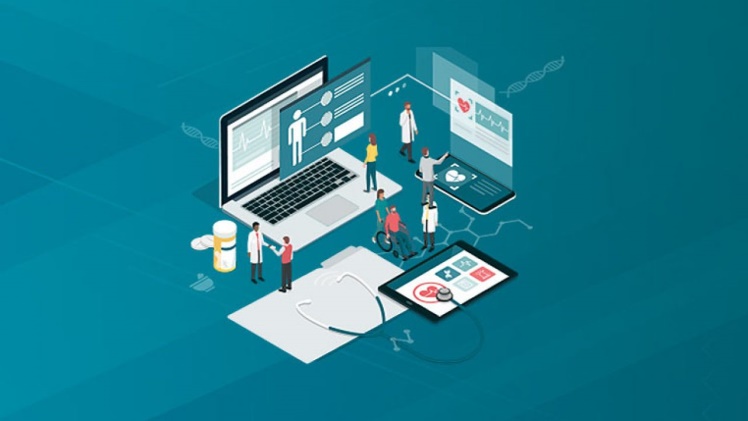EMR technologies have transformed the healthcare business by offering a digital platform for storing and managing patient medical information. Through the implementation of EMR systems, healthcare professionals have been able to enhance patient care, boost efficiency, and reduce costs. In this post, we will look at the characteristics and benefits of EMR systems, as well as the many types of EMR systems available and the problems associated with establishing makeeover EMRs.
Types of EMR Systems
There are several types of EMR systems, including standalone EMR systems, cloud-based EMR systems, and client-server EMR systems.
Standalone EMR Systems
Individual Personal computers or servers host standalone EMR systems. Small healthcare practices that do not require significant EMR capability frequently employ them. Standalone EMRs are simple to use, but they lack the sophisticated capabilities found in more comprehensive EMR systems.
Cloud-Based EMR Systems
Cloud-based EMR systems are accessible through the internet and run on distant servers. They have several advantages, including cheaper costs, scalability, and ease of use. Cloud-based EMRs are appropriate for all sizes of practices, including big healthcare organizations.
Client-Server EMR Systems
Client-server EMR systems are hosted on a central server and accessible via client software on individual PCs. Client-server EMRs are appropriate for medium-sized healthcare practices with advanced EMR needs.
Features of EMR Systems
EMR systems provide a variety of features aimed at improving patient care and increasing efficiency in healthcare settings. Some of the important aspects of EMR systems are as follows:
Patient Record Management
Healthcare practitioners may view and manage patient information in real-time using EMR medical systems. This function guarantees that medical practitioners have access to the most recent patient information, which is critical for providing high-quality patient care.
Appointment Scheduling
Healthcare professionals may use EMR systems to arrange and manage patient visits in real-time. This function reduces wait times and ensures that patients receive the care they require as soon as possible.
Electronic Prescribing
EMR systems enable healthcare practitioners to electronically prescribe medications. This feature aids in the reduction of medication mistakes and ensures that patients receive the proper drug in the appropriate amount.
Lab Integration
EMR systems may be integrated with laboratory systems, giving healthcare practitioners real-time access to and management of test findings. This functionality is critical for ensuring that patients receive accurate and timely test results.
Benefits of EMR Systems
EMR systems have several advantages, such as improved patient outcomes, enhanced efficiency, and cost savings.
Improved Patient Outcomes
EMR systems enable healthcare practitioners to offer their patients high-quality treatment. EMRs guarantee that patients obtain prompt and accurate diagnoses and treatments by giving healthcare practitioners access to real-time patient information.
Increased Efficiency
EMR systems aid in increasing the efficiency of healthcare practices. EMRs free up healthcare practitioners to focus on providing high-quality treatment to their patients by automating many of the time-consuming administrative chores involved with healthcare.
Cost Savings
EMR systems can help healthcare practices cut expenses. EMRs can help healthcare providers save money in the long run by simplifying administrative duties, decreasing paperwork, and avoiding mistakes.
Improved Communication
EMR systems increase provider communication by allowing them to communicate patient information in real-time. This feature ensures that all healthcare practitioners involved in a patient’s care are updated on their medical history and treatment plan.
Better Coordination of Care
EMR systems allow healthcare practitioners to coordinate treatment across specializations and environments. This feature aids in ensuring that patients receive the proper care at the appropriate time and in a suitable setting.
Challenges of EMR Systems
EMR systems might be difficult for healthcare practitioners to use. Some of the major issues related to EMR systems are as follows:
Implementation Costs
Installing an EMR system can be costly, particularly for small medical offices. The cost of software, gear, and training may quickly pile up, making EMRs too expensive for certain operations.
Training Requirements
To use EMR systems efficiently, healthcare providers must be trained. Training healthcare practitioners may be time-consuming and costly, and some doctors may be hesitant to use EMRs owing to the learning curve.
Data Security
Since EMR systems include sensitive patient information, they are a target for hackers. It is critical to ensure the security of patient data, and healthcare practitioners must take precautions to secure patient data from cyber attacks.
Technical Issues
EMR systems can be complicated, and technological problems might occur. Downtime caused by technical difficulties can be frustrating for healthcare personnel attempting to give treatment to their patients.
Interoperability
Different suppliers’ EMR systems may be unable to communicate with one another. This lack of interoperability might make it difficult for healthcare practitioners to exchange patient information with other providers.
Regulatory Compliance
HIPAA and other regulatory standards must be met by EMR systems. To prevent penalties and legal concerns, healthcare providers must verify that their EMRs comply with regulatory regulations.
Conclusion
By offering a digital platform for storing and managing patient medical information, EMR systems have transformed the healthcare business. Through the implementation of EMR systems, healthcare professionals have been able to enhance patient care, boost efficiency, and reduce costs. Patient data management, appointment scheduling, electronic prescription, lab integration, improved patient outcomes, enhanced efficiency, cost savings, improved communication, and better care coordination are all characteristics and benefits of EMR systems.

